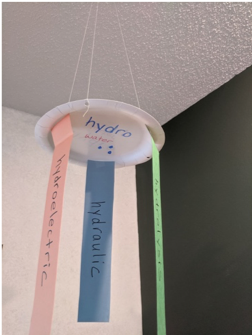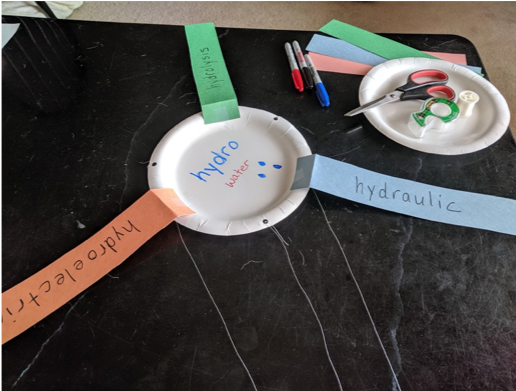2019 Bostitch Classroom Grant Winner: Kathy Meitl
- Nov 8, 2019

We’re so excited to share that one of the two winners of the Bostitch Creativity in the Classroom Grant is Ms. Kathy Meitl! Her lesson plan, which pairs science with Latin and Greek root words to teach students about the importance of the origin of scientific vocabulary, won her the grant for classroom supplies for her students.
About Ms. Meitl
Located at Woodside Middle School in Des Moines, Iowa, Ms. Meitl is a teacher to budding 8th grade scientists. She teaches the subject of science in a creative and fun way, incorporating everyday root words, that will stick with her students as they expand their vocabulary for years to come!
The Winning Lesson Plan
Objective: Students will be able to identify and define Greek and Latin root words found in the science vocabulary they are expected to know by the end of the year. The class will create a “jellyfish” for each root word and throughout the year can add “tentacles” containing vocabulary words they come across both in our curriculum and outside the classroom that contain that root word. These jellyfish will hang from the classroom ceiling all year as a vocabulary review and as a reminder that understanding science vocabulary can help you understand other new words you experience in everyday life, and vice versa.

Materials: white paper plates, hole punch, lightweight yarn or thread, clear tape, markers, construction paper in various colors cut into 3x12” strips, poster-size sticky paper, small post-it notes
Engage: Put students into teams of 3-4. Provide each team with a list of complex words full of Greek/Latin roots and a list of definitions (i.e. necrotroph = parasite that kills its host and feeds on the dead body). For Round 1 see how many words the teams can correctly match to their definitions in 2 minutes. For Round 2 give them a new set of words and this time provide a list of root words with their definitions (i.e. necro = corpse, troph = nourishment). See how many each team can now correctly match in 2 minutes. Discuss how knowing the meanings of parts of the words helped identify their definitions.
Explore: Allow students to work in pairs. Give each pair 2 common words that contain the same root word (i.e. submarine, subtraction). Have them brainstorm that root’s meaning without looking it up (sub = below/under). Have pairs team up with another pair to share their conclusions and reasoning. Each team writes their root and definition on a sticky note and adds it to a class poster.
Explain: As part of a class discussion, present a few vocab words from the first unit that seem difficult at first but could be broken down into root words. Ask students how they have learned vocab in the past and as a class analyze how breaking words down into their component meanings compares to those strategies.
Elaborate: Pass out craft materials to each table. Have them create one jellyfish body by writing a given root word in large print on a paper plate and then writing its definition below it in smaller print. They can add a drawing if the definition warrants it. Have them punch 3 holes around the edges of the plate and tie a 24” piece of string to each hole. Gather the ends of all 3 strings and tie them together. Tape the knot to the ceiling (adjust the height as needed so 12” tentacles taped to the bottom of the plate would not hang lower than head height of the students). Explain that as the year goes on, if a student comes across a word that contains one of the root words, they can write it on a tentacle and tape it to the jellyfish body. Create a stack of blank tentacles that students can access when needed.
Evaluate: As students add tentacles, check that they are correct pairings. Have a quick check in with the entire class (as perhaps part of a warmup or exit ticket) to see if they can figure out the meaning of the new word based on the meaning of the root. Within each unit assessment, include questions on vocabulary from that unit. Remind students to break down words into their component parts and think of the meanings of root words. This can include the current content vocab as well as new words that contain the roots involved in that content vocab.

We loved this lesson plan as it not only taught students the importance of learning root words in science, but it incorporates context to everyday vocabulary that stems from Greek and Latin words. It is fun and crafty yet teaches a lifelong lesson to her students.
Want to join in on the fun and enter for your chance to win a $250 grant? Check out this page to get all information on how to submit your own original lesson plan!






